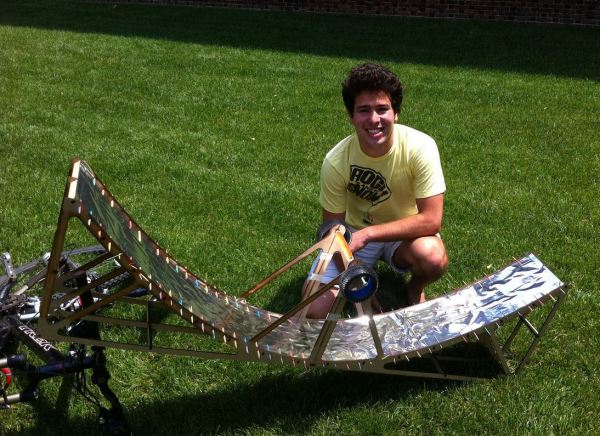Parabolic reflectors for solar applications are nice stuff, and making your own is a great project in itself. One of the easiest ways we have seen is that of [GREENPOWERSCIENCE], who uses nothing more than a trash can lid, mylar film, and tape. You need a way to make a partial vacuum though.
The idea is so simple that it´s almost like cheating. Cut a circle of mylar slightly larger than the lid, and tape it all around, taking care of stretching the mylar in the process. After you´re done with this, you end up with a nice flat mirror. Here´s where the vacuum is needed to force the film into parabolic shape. Extract the air from a little hole in the lid that was previously drilled, and tape it to prevent the loss of the vacuum. The atmospheric pressure on the mylar film will take care of the job, and magically you get a nearly-parabolic reflector ready for work.
In this other video, you can see the reflector in action burning stuff. One obvious problem with this technique is the loss of the vacuum after some time, about an hour according to the author. Here´s another way to make a more durable mirror also with mylar as the reflecting element, however the quality of the resulting mirror is not as good.













